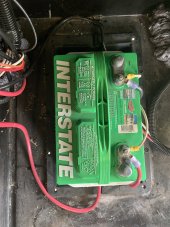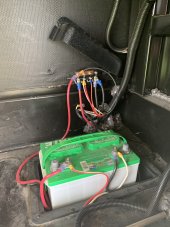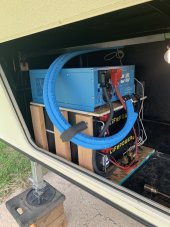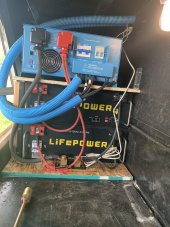Supplement to my last post...
Couple things I didn't want to get missed in an edit:
On 30A shore power, you may overload shore very easily. When on shore power, the inverter passes through the AC to loads AND uses it to charge the batteries. Very easy to exceed 30A between loads and charging. It's also possible to do it on 50A shore.
That particular unit is a bit of a turd for LFP batteries. They have a really goofy absorption charge time algorithm that can result in several hours of absorption charging on LFP. HOWEVER, since this has an LFP setting for 13.8V (*4), that's most a non-issue in terms of being healthy for the batteries. Where it will suck is if you're charging with generator. This will notably extend your charge time consuming more fuel. If you ever find yourself needing to charge by generator, set to sealed lead acid until the batteries report 57.6V, turn off the generator and then switch back to Lithium.
Those do look like a tank!!! But, if I were to purchase one, then it looks as though I'd have to buy an MPPT as well?? The one I have already has one integrated. It would have been nice to pass 240v on through though...
Yep.
Also, there's a dirty little secret with your inverter...
It consumes about 80-100W ALL THE DAMN TIME, NO MATTER WHAT, UNLESS YOU TURN OFF THE INVERTER. It needs power to energize the circuits to make AC power available.
That's 2160Wh/day or about 40% of ONE of your batteries (20% of total capacity). I doubt he factored this in when he designed your system.
I recommend you refer him to this page, so that he may educate himself and improve his services.
This is very common with the cheap Chinese AiO (all in one) units. Higher quality (expensive) units use notably less. My 2X inverters totaling 10kW use less than 60W combined.
Lastly, your 1800W of solar is the ultimate limiter on your
DAILY consumption. If you use more than the PV generates, you will eventually deplete your batteries.
I'll have to get in behind the panel to see for sure, but I don't think(fingers crossed) it was installed that way. Besides, we don't run 2 a/c's at a time, or 2 big draws at the same time. We're both very conscientious about limits..
yeah, and we thought 6K was going to be a-plenty!!!
If you are conscientious, it probably is. We are running a 37' Keystone Montana Big SKy on a single 5000W inverter feeding both legs with 120V. My two inverters in split phase eventually go to a 50A to 2X30A splitter that feeds one inverter to one trailer.
I'm going to try to stay away from running on propane, and look toward replacing the fridge.
I'm saying temporarily. Your fridge can easily completely tap your batteries in 24 hours, especially if you keep the interior comfortable.
Without labelling my installer (like I said, he's really a great person and willing to work with me) he may have made assumptions about an absorption fridge requirement. He and I will revisit the setup and his calculations.
I hope he takes well meant criticism constructively.
If the installer is still willing to build and send me a dc2dc converter, I think I'll let him and remove the 12v battery/12v converter. I'd rather have the efficiency until I think about buying another 48v battery.
I would be VERY hesitant to do this. I do not trust that it will be successful UNLESS you have ZERO significant surge loads. Slide motors, generator starters, or hydraulic pumps can have a notable surge (50-80A+), which can overwhelm a DC-DC converter and shut it down. Another + of leaving the 12V battery in place, is it serves as a buffer between the high surge item and the source.
For a full timer rig with the potential need for A/C, your system is barely capable. I suspect you will be looking to add at least 2X more batteries and a bunch of portable panels for a deployable array to add at least another 1kW PV when summer comes around like this guy, but more:
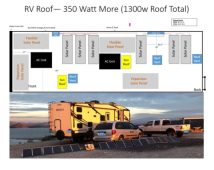 @chrisski
@chrisski , how many hours/day of A/C use can you do with your setup?
I'm not trying to be insulting. I'm being direct.



